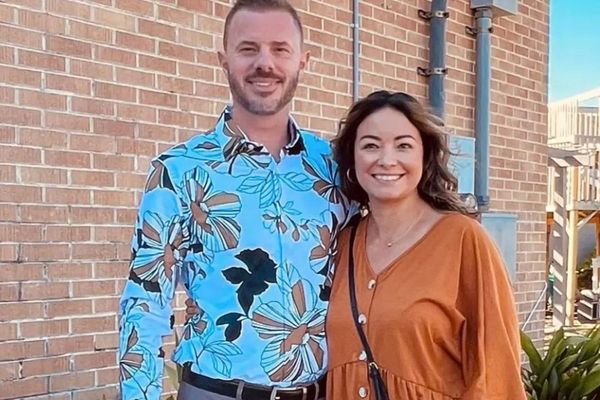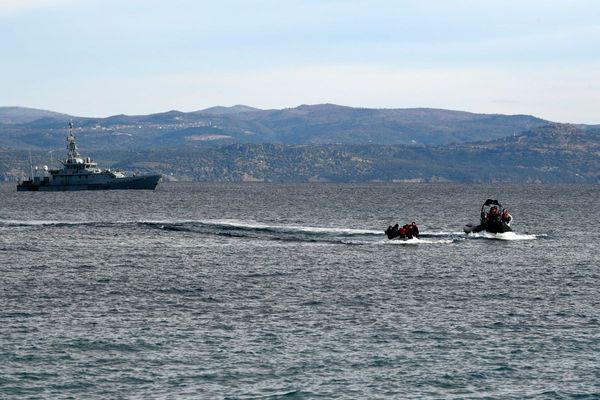
Some of Australia’s most popular sunscreens, including some made by Bondi Sands, Banana Boat and the Cancer Council, are falling short of the level of skin protection on the bottle, a Choice investigation has found.
The consumer advocacy group said it tested 20 popular SPF 50 or 50+ sunscreens from a range of retailers and prices in a specialised, accredited laboratory and found 16 of them did not meet their SPF claims.
The SPF, or sun protection factor, of a sunscreen measures how well it protects the skin from sunburn by indicating how much ultraviolet radiation could reach the skin.
For example, SPF30 is estimated to filter 96.7% of UVB radiation, whereas SPF50 is estimated to filter 98%. Sunscreens and their SPF claims are regulated by the Therapeutic Goods Administration (TGA).
Ultra Violette’s Lean Screen SPF 50+ returned the worst result of any sunscreen tested by Choice, with the testing showing the product had an SPF of just four.
Choice’s chief executive, Ashley de Silva, said they were “shocked” by the result and ordered a second round of testing on a different batch of the same Ultra Violette product, using a laboratory in Germany, to confirm the results.
Those tests returned a “basically identical result” – it found the product had an SPF of five, de Silva said.
A spokesperson for Ultra Violette said it did not accept Choice’s results as “even remotely accurate” and accused the consumer group of releasing “misleading information” to generate news coverage.
Ultra Violette took issue with Choice’s methodology, saying the group’s second round of testing involved only five participants.
“We retested our product in a full 10-person panel and the results have come back at 61.7, which is above the threshold required by the TGA to make a 50+ claim,” the spokesperson said.
“Two blind tests with a very small sample size are not substantial in comparison to the extensive rounds of testing with supporting documentation Ultra Violette have conducted in accordance with the TGA testing guidelines.”
Choice said the Australian laboratory it chose for the first round tested the sunscreens on 10 people and it was only the Ultra Violette product that was then tested for a second time in a “validation test” involving five people.
Four of the other sunscreens tested by Choice claimed to offer SPF 50+ protection but showed sun protection factors in the 40s: the Coles Sunscreen Ultra Tube, which tested at 43; Nivea’s Sun Kids Ultra Protect and Play Sunscreen Lotion and its Sun Protect and Moisture Lock Sunscreen, which tested at 41 and 40 respectively; and the Sun Bum Premium Moisturising Sunscreen Lotion, which tested at 40.
Another four sunscreens were found to have sun protection factors in the 30s, Choice said: Banana Boat SPF50+ Sunscreen Lotion, which tested at 35, Bondi Sands SPF50+ Fragrance Free Sunscreen, which tested at 32; Cancer Council Kids Clear Zinc 50+, which tested at 33; and Invisible Zinc Face + Body Mineral Sunscreen SPF 50, which tested at 38.
Choice’s testing found another seven sunscreens had sun protection factors in the 20s: Aldi’s Ombra Everyday Sunscreen Lotion 50+, which tested at 26; the Banana Boat Baby Zinc Sunscreen Lotion SPF 50+, which tested at 28; and the Bondi Sands SPF 50+ Zinc Mineral Body Lotion, which tested at 26.
The Cancer Council’s Everyday Value Sunscreen SPF 50 and Ultra Sunscreen SPF 50+ tested at 27 and 24 respectively, while Neutrogena’s Sheer Zinc Dry-Touch Lotion SPF 50 tested at 24.
Woolworths’ Sunscreen Everyday Tube SPF 50+ tested at 27, Choice said.
The four sunscreens which met their SPF claims according to Choice’s testing were the La Roche-Posay Anthelios Wet Skin Sunscreen SPF 50+, which tested at 72; Neutrogena Ultra Sheer Body Lotion SPF 50, which tested at 56; Cancer Council Kid Sunscreen 50+, which tested at 52, and the Mecca Cosmetica To Save Body SPF 50+ Hydrating Sunscreen, which tested at 51.
De Silva said the advocacy group was surprised by the findings overall.
“To see 16 of 20 products not meeting their SPF claims is a really significant number,” de Silva said. “Consumers are expecting their sunscreen to protect them in line with the SPF rating.”
De Silva said sunscreens with sun protection factors in the 30s “still do a wonderful job” as there is only a small difference in the amount of ultraviolet radiation they allow to penetrate the skin compared with a SPF 50 product.
However, he said it was important to call out sunscreen manufacturers if they were marketing and selling products using claims that may not stack up.
“It’s important that consumers can feel like what they’re buying is what they’re getting,” he said.
Choice said it had shared its findings with the sunscreen manufacturers.
Contacted by Guardian Australia, a Cancer Council spokesperson said the organisation was “very concerned” by the results of Choice’s tests but insisted its products complied with its SPF claims.
“Out of an abundance of caution, we have submitted the four referenced products for further testing by an independent international laboratory,” they said.
A spokesperson for Aldi said all its sunscreen formulations had been independently laboratory tested in accordance with the TGA’s standards and underwent ongoing testing.
A Woolworths spokesperson said the supermarket’s own-brand sunscreen were regularly tested according to TGA’s “stringent” requirements and that they lived up to their SPF claims.
A Bondi Sands spokesperson said it did not “share the assessment by Choice” as it did not reflect its own testing in line with TGA regulations and it wanted to “reassure all of our consumers that our sunscreen delivers the expected SPF when applied as instructed on the label”.
An Invisible Zinc spokesperson said its Face + Body Mineral Sunscreen SPF50 showed an SPF of 63.1 when it was last tested in 2017, and its formulation had not changed since then.
“The standard protocol for testing SPF is on 10 human subjects,” they said. “While we stand by that testing methodology, human skin can obviously be highly variable in different subjects and that can therefore lead to some variability in test results.”
De Silva said he hoped the TGA would conduct its own testing and the Australian Competition and Consumer Commission (ACCC) would consider the discrepancies identified by Choice.
The ACCC said businesses had an obligation not to make false or misleading representations to consumers and that it would work with the TGA to consider Choice’s “allegations”.
The TGA said it was investigating Choice’s findings and would “take regulatory action as required”.
Guardian Australia contacted the other brands named by Choice for comment.







